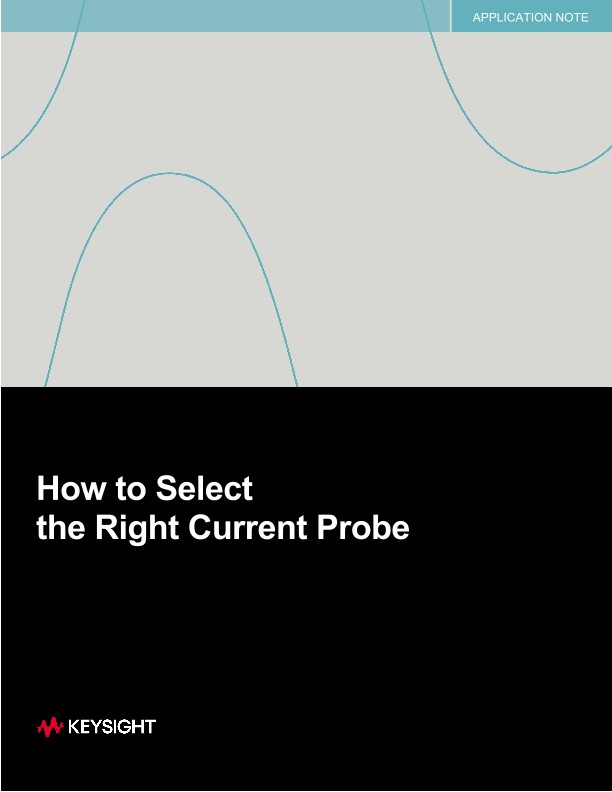Choose a country or area to see content specific to your location

应用文章
Overview
Oscilloscope current probes enable oscilloscopes to measure current, extending their use beyond just measuring voltage. Basically, current probes sense the current flowing through a conductor and convert it to a voltage that can be viewed and measured on an oscilloscope. The most commonly used technique to measure current is magnetic field sensing of a current-carrying conductor. However, there are many different types of current probes you can choose from and each probe has an area where it performs best. When they’re used properly for the applications they are designed to work with, you get the best results.
This application note will introduce you to the common types of current probe solutions, the fundamental principles, the advantages and limitations of each current probe type, and the practical consideration for using current probes for oscilloscope applications to make the most out of them.
Table of Contents:
Types of Current Probes
Current probes are widely used in making power device or power supply current measurements and they are becoming indispensable tools to make accurate current measurements with oscilloscopes. To address those current measurement needs, there are a number of different techniques to measure electric current, but the most common techniques used with oscilloscopes are:
Sense Resistor or Shunt Resistor
A direct way of measuring current on your DUT is to use a shunt resistor in the current flow, measure the voltage drop across the resistor, and convert the voltage into current by using the Ohm’s law formula (i.e., I = V/R). This method is an invasive measurement in that the sense/ shunt resistor and the voltage measurement circuit or probe are electrically connected and are a part of the DUT. Therefore, there are many considerations to take into account.
×
请销售人员联系我。
*Indicates required field
感谢您!
A sales representative will contact you soon.